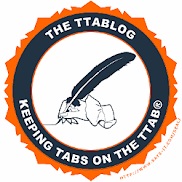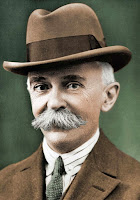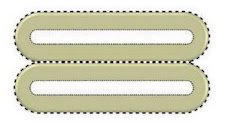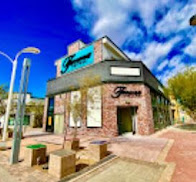This is the second of two posts; the first five (5) selections were posted here yesterday. Additional commentary on each case may be found at the linked TTABlog post. The cases are not necessarily listed in order of importance (whatever that means).

The United States Olympic Committee v. Tempting Brands Netherlands B.V., 2021 USPQ2d 164 (TTAB 2021) [precedential] (Opinion by Judge Cynthia C. Lynch). [TTABlogged here]. The TTAB dismissed the Olympic Committee's opposition to registration of the mark PIERRE DE COUBERTIN for various goods in classes 3, 9, 14, 18, 25, and 28, including perfume, sunglasses, jewelry, luggage, clothing, and sporting goods. Pierre de Coubertin is the name of a French baron who was instrumental in reviving the Olympic Games in the late nineteenth century by co-founding the International Olympic Committee and later becoming its president. The Board found that the Committee had failed to prove its claim that the proposed mark falsely suggests a connection with the Olympic Movement in violation of Section 2(a) of the Lanham Act. The Committee did not clear either of the first two hurdles of the Section 2(a) test: (1) that the mark falsely suggests a connection with a person or institution, and (2) that the mark points uniquely and unmistakably to that person or institution. "While Pierre de Coubertin certainly was associated with the Olympic Movement, this record does not demonstrate that the public would perceive Applicant's mark as a name or identity of the Olympic Movement or Opposer, or a close approximation thereof." Moreover, the name is associated with the person "rather than serving merely as a synonym of the Olympic institution," and thus does not point uniquely and unmistakably to opposer.

In re Dimarzio, Inc., 2021 USPQ2d 1191 (TTAB 2021) [precedential] (Opinion by Judge Mark Lebow). [TTABlogged here]. A single-color mark on a product design is registrable only upon a showing of acquired distinctiveness. Wal-Mart (citing Qualitex). Applicant Dimarzio, Inc. fell far short of proving that its claimed color "cream" for electronic guitar pickups met that test, and so the Board affirmed a refusal to register under Sections 1, 2, and 45 of the Lanham Act. In making the Section 2(f) determination, the Board applied the CAFC's Converse factors. DiMarzio did not offer survey evidence, but submitted "fill-in-the-blank" declarations from eight different distributors and customers; the Board found them of little, if any, probative value. Dimarzio claimed use of the proposed mark since 1979, with millions of consumers observing its guitar pickups in videos, advertisements, and musical performances. The Board pointed out, however, that long-time use of a supposed mark does not alone establish acquired distinctiveness. In fact, the evidence showed that DiMarzio's use of the color cream on guitar pickups was not substantially exclusive. DiMarzio did not provide details regarding its purported sales or its market share, nor did it submit evidence of unsolicited media coverage. Its advertising characterized the color cream as one of many colors available, and so there was nothing to lead consumers to perceive the color cream as a mark.
In re Taverna Izakaya LLC, 2021 USPQ2d 1134 (TTAB 2021) [precedential] (Opinion by Judge Cynthia C. Lynch). [TTABlogged here]. Because the ordinary American purchaser would not stop and translate a mark comprising words from different languages, the TTAB refused to apply the doctrine of foreign equivalents and it reversed a Section 2(e)(1) mere descriptiveness refusal of TAVERNA COSTERA for "restaurant, cafe, and bar services." Applicant argued that because the first word is understood in English, it is "exceeding likely" that the average consumer would not stop to translate COSTERA, "particularly since the Spanish word COSTERA is pronounceable in English." The Board agreed: "Given that ordinary consumers would recognize the first word in Applicant's mark not only as an English word but one that connotes a Greek café and Greek cuisine, those consumers would not be inclined to stop and translate the next word in the mark from Spanish." The Board observed that courts and the TTAB have frequently ruled that consumers would not "stop and translate" marks comprised of terms in multiple languages, "often finding that the marks combine the different languages for suggestive purposes to create a certain commercial impression:" for example, LE CASE for jewelry boxes; GLACÉ LITE for ice cream products.
McGowen Precision Barrels, LLC v. Proof Research, Inc., 2021 USPQ2d 559 (TTAB 2021) [precedential] (Opinion by Judge Mark Lebow). [TTABlogged here]. The Board granted a petition for cancellation of a registration for the trade dress of a gun barrel, on the ground of de jure functionality under Section 2(e)(5). The registered mark consists of trade dress applied to gun barrels formed with a mottled pattern of irregularly sized, rippled patches resembling a quilt. As often happens in Section 2(e)(5) determinations, respondent's own utility patent blew a hole in its case. There was no dispute that carbon fiber composite barrels provide various functional benefits to rifles. "What the parties dispute is whether the particular appearance of Respondent's carbon fiber composite barrels is functional because it is a natural byproduct of the manufacturing process that creates the barrels, as Petitioner claims, or whether it is simply the result of Respondent's cosmetic efforts to create a trade dress that consumers associate with Respondent." The Board looked to respondent's utility patent in concluding that the appearance of the gun barrel is dictated by its function. "Simply put, the patent evidence, combined with the evidence regarding Respondent's manufacturing process, is dispositive on the issue of functionality."
In re Maugus Manufacturing, Inc., 2021 USPQ2d 1100 (TTAB 2021) [precedential] (Opinion by Judge Cindy B. Greenbaum). [TTABlogged here]. To be registrable, a proposed trademark must function as a source indicator in the eyes of relevant consumers. Applicant Maugus Manufacturing failed to meet that basic requirement in its attempt to register the phrase DRINK MORE BEER for "non-metal and non-paper closures for containers." Applicant's specimens of use showed that it uses the trademark "NNBC" to identify and distinguish the source of its closures; DRINK MORE BEER "merely identifies optional wording that may appear on one of the products, or one of the available styles for the product sold, under the NNBC mark." The Board agreed with the examining attorney that the proposed mark, as presented on Maugus's specimens of use, would not be perceived as identifying source, but rather would be seen as examples of how wording may appear on the products that consumers purchase. "They would not associate the wording DRINK MORE BEER stamped or embossed on the growler cap as a source identifier of the 'non-metal and non-paper closures for containers identified in the application."
The content of this article is intended to provide a general guide to the subject matter. Specialist advice should be sought about your specific circumstances.





